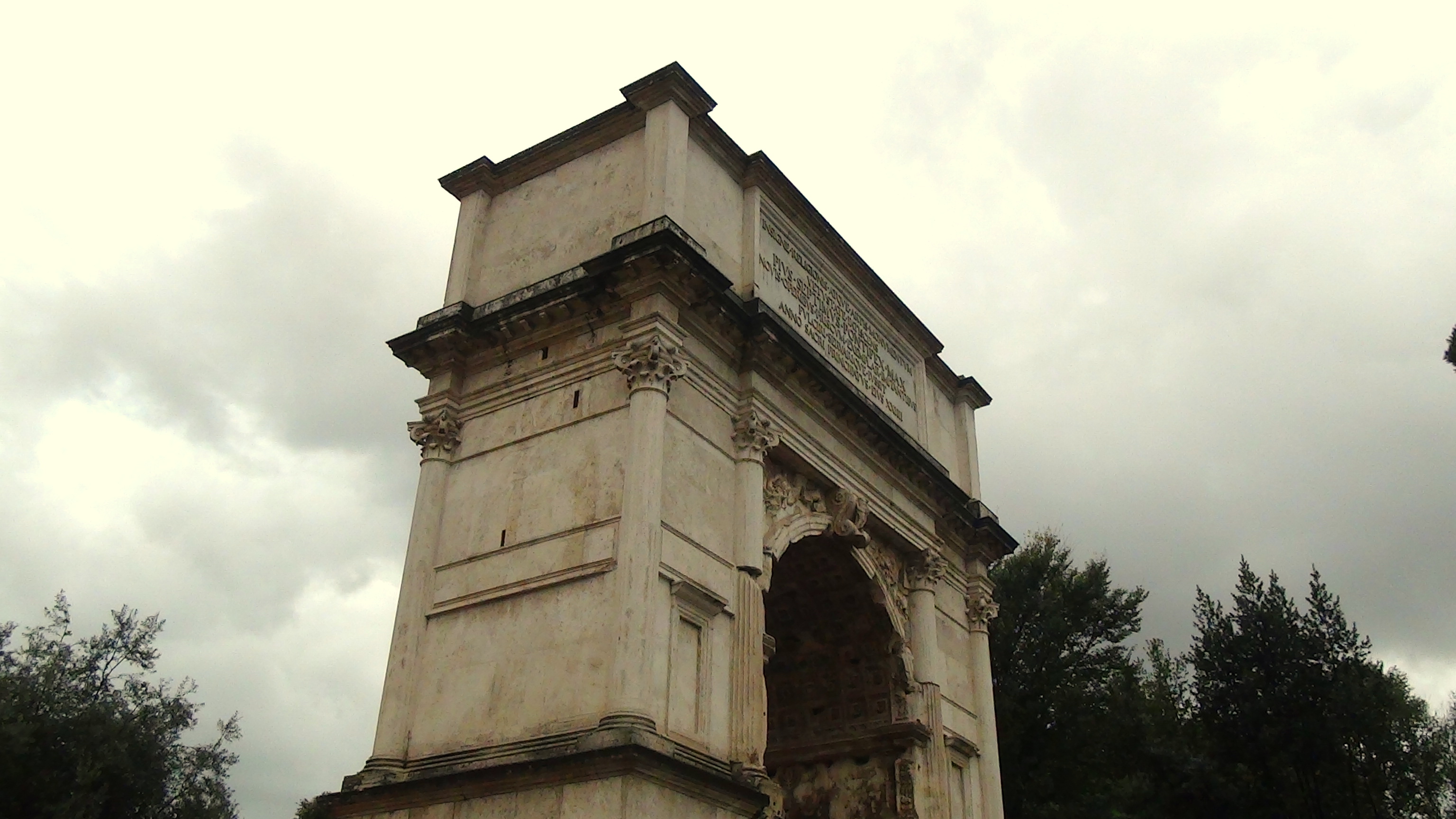Archive for category Biblical archaeology
Is the Titulus Crucis authentic?
Posted by simon peter sutherland in Biblical archaeology on March 22, 2024
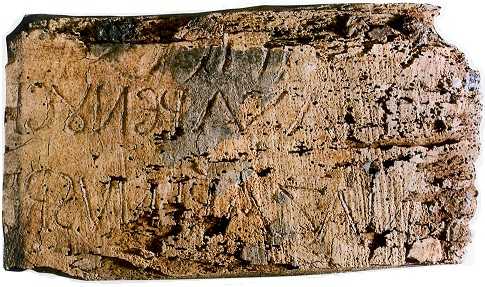
In the Church of Santa Croce in Gerusalemme, Rome, is an artefact known as the Titulus Crucis.
Titulus Crucis is Latin for title of the cross and the item in focus is a piece of wood which is claimed by some to be the actual sign placed on the cross above Jesus’ head 2000 years ago and it may well be? It certainly seems consistent with the gospels to me.
In the gospel of Luke 23: 38 this title was written in Greek, Latin and Hebrew and reads,
“THIS IS THE KING OF THE JEWS”
In the gospel of John 19: 19 the title is written in Hebrew, Greek and Latin and reads,
“JESUS OF NAZARETH, THE KING OF THE JEWS”
The Titulus Crucis is written in Hebrew, Greek and Latin. I have viewed this item a number of times and I am fascinated by it.
The story goes that in the 4th century Helena (mother of Emperor Constantine) travelled to Jerusalem to discover the items associated with the life of Christ and she famously found the true cross and the nails and the Titulus Crucis. This history is attested to by Ambrose (c. 339-397) and Chrysostom (died 407)
Likewise a pilgrim named Egeria travelled to Jerusalem about 381/2-384 and wrote about seeing this item in a chapel and the writings of Egeria are considered very reliable.
The story goes that Helena kept a section of the Titulus in her own private chapel and in later centuries the item was thought to be lost until it was rediscovered above the altar.
I have visited Helena’s chapel a number of times and I have spent considerable time looking at the Titulus Crucis in another room and even though I am not a Roman Catholic nor have any part in that religion, nor do I consider the early Roman Church to be the same religion, I view this item as sacred. I do not know of any evidence to make me consider it to be a forgery.
In contrast to the accounts in Matthew 27: 37, Mark 15: 26, Luke 23: 38 and John 19: 19 the Titulus Crucis does not read as though it has been copied from the four gospels but has its own character.
In my opinion Matthew’s gospel was originally written in Hebrew whereas a version of Luke was written to a Roman official in Latin and John in Greek. For these reasons I believe it is possible that Matthew was quoting the Hebrew line of text, Mark the Greek line of text and Luke the Latin line of text and John the Greek line of text. This accounts for the minor differences in all four gospels.
Matthew 27: 37 reads “THIS IS JESUS THE KING OF THE JEWS.”
Mark 15: 26 reads “THE KING OF THE JEWS.”
Luke 23: 38 reads “THIS IS THE KING OF THE JEWS.”
John 19: 19 reads “JESUS OF NAZARETH THE KING OF THE JEWS.”
When viewed from this perspective I believe there is no contradiction in the gospels. Each author was writing from a specific section of the title and from the perspective of their intended audience.
Likewise I am of the opinion that the original title may have been highlighted in some way to make it more readable for the passers by, and this item is believed to have been covered in white chalk and the carved out text to have been painted black.
When I have looked closely at the item it is very clear that the carved writing is rugged and unique, and to me the writing reflects the urgency and controversy of the moment as implied by the context of John 19: 19 where John writes that “Pilate wrote a title and put it on the cross.”
For me this is a very important observation.
I have returned to Zipari Kos
Posted by simon peter sutherland in Biblical archaeology, Documentaries, The Bible on July 3, 2023

Those who are familiar with my previous writings and documentary work will know how fascinated I am with Paul’s visits to the Greek islands, especially Kos. On my previous visits to the Island of Hippocrates I repeatedly travelled to an area known as Zipari.
For those who do not know, Zipari is a modern town along the highway of Kos, yet back in the 1st century it would have been quite remote.
Today Zipari is about 8.3 – 11 kilometres from the general area of Kos town, which is without question the definitive location of Acts 21: 1. Kos town harbour is the exact place where Paul and Luke landed.
Yet at Zipari the 5th century remains of St Paul’s basilica can be seen. Here Italian archaeologists have found ancient mosaics.
For some reason previously unknown to me I have been very intrigued by this place and have been unable to let it pass. The sign reads like so:
“St Paul the Apostle
visited this place during his
third missionary journey”
This exact sign can also be scene in St Paul’s Bay, Lindos. Both Rhodes and Kos are present in Acts 21: 1. Likewise both signs quote the same Scripture, “There is neither Jew nor Greek, slave nor free, male nor female, for you are all one in Christ Jesus.” (Galatians 3: 28)
But what is it about Zipari that intrigues me so? The answer is I think it possible St Paul may have visited here? as I think he visited Lindos.
Revisiting Kos once again was a new experience for me. With many things behind and a new path in front of me I wanted to explore the area from another perspective so I followed that instinct and an old wall. This gave me a lot of insight and I’m now on a journey to discover more. Where this will lead I do not know?
My aim has been to explore Acts 21: 1 from an imaginative perspective and discover more about the meaning of that verse. Making my way through the ancient sections of Kos harbour, the agora and the Western Archaeological site, I am gaining a more vivid picture of Luke’s narrative and the pieces of my puzzle are falling into place.
In my fist documentary on Kos I explored the island from the perspective of St Luke. This led me to the ancient Asklepion of Kos, yet in my previous documentary I explored the island from the perspective of St Paul and this took me on a very different voyage.
This is reflective in the closing words of that film:
“Back to the harbour, I found myself contemplating what exactly happened when Paul and Luke visited this island. But I suspect I may never truly know this side of eternity.”
It was at the location of those scenes where I began this new era of my voyage. I am content to follow on as the Lord leads. It seems my voyage to Kos may not be over after all.
Biblical ‘curse tablet’ found on Mount Ebal
Posted by simon peter sutherland in Biblical archaeology, The Bible on April 10, 2022
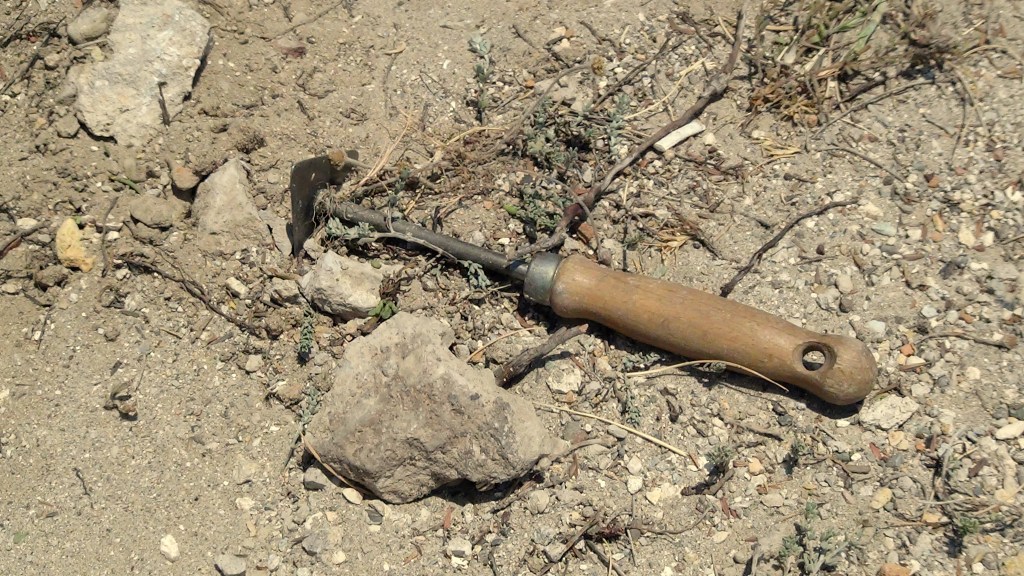
Biblical Archaeologists have uncovered an ancient tablet containing what could be the earliest known example of the Hebrew name name of God, Yahweh.
The Tablet was found on Mount Ebal mentioned in Deuteronomy 11: 26, 29.
The ‘curse tablet’ is an extraordinary discovery because it was found on a site believed to be the altar of Joshua. If proven beyond doubt it could be the most significant Biblical find since the discovery of the Dead Sea Scrolls in 1946/47.
The use of Hebrew would also predate the Dead Sea Scrolls by 1,350 years. Meaning the ancient Israelites had a much more advanced knowledge of Hebrew than modern scholars have thought.
If true the ‘curse tablet’ could prove the Books of Moses were written earlier than modern scholars have claimed. I say this because in recent years many modern sceptics have sought to challenge the claim that Moses was the author of the Pentateuch. The use of Hebrew, they say, is too advanced. Yet Jesus said “If you had believed Moses, you would be Me: because he wrote about Me.” (John 5: 46). Clearly Jesus believed Moses was the author of the Torah.
I believe people today have to live with one of the biggest problems in history, they have lost confidence in the Bible. Secularists and revisionist modernisers have sought to drive away peoples trust in the Bible. But God is forever drawing them back.
The gospel of Jesus Christ is yet to be discovered by many people and for believers, telling people the truth about Christ is a little like doing archaeology, we must remove centuries of layers to uncover the truth.
The ‘curse tablet’ is great news in a world hell bent on destroying itself. If proven to be true, it is an excellent discovery. But don’t take my word for it. Look it up, see for yourselves! Have faith and be assured the Bible is true from cover to cover. Go tell someone about Jesus Christ today.
Apostle Paul and the Island of Hippocrates
Posted by simon peter sutherland in Biblical archaeology, Documentaries, The influence of film on October 3, 2021
A 15th century image on St. Paul’s Gate, Rhodes
Posted by simon peter sutherland in Biblical archaeology, The Bible on June 18, 2019
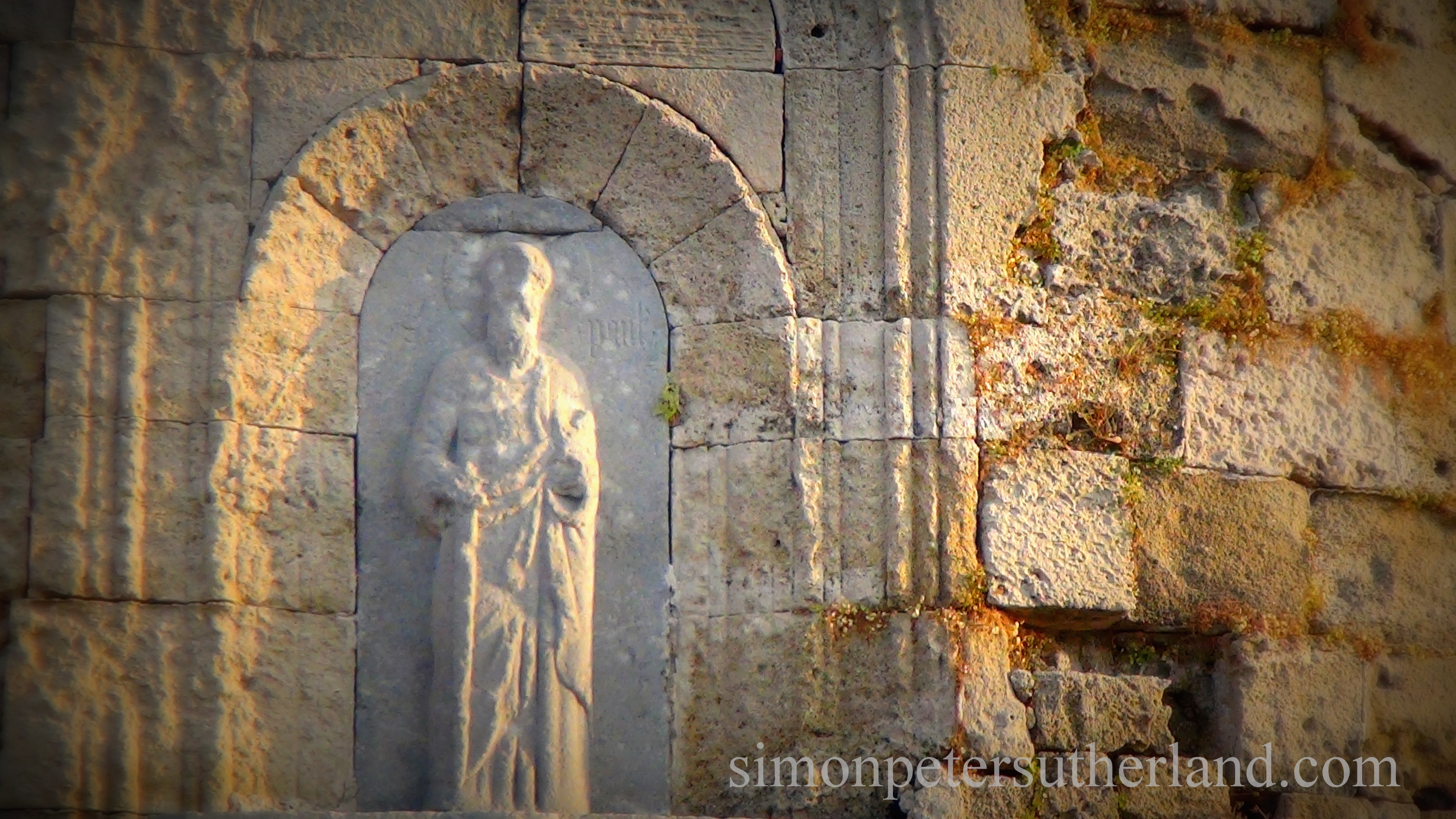
Apostle Paul on Rhodes © 2019 Simon Peter Sutherland
While on the Greek island of Rhodes, I revisited the site of Acts 21: 1. This location is Rhodes Town, the site of the Colossus of Rhodes and St. Paul’s Gate. Here Paul and Luke landed in the 50’s AD.
It is quite easy to miss but within the walls surrounding the Gate of St. Paul, there is a 15th century image of the Apostle high up on the wall.
The image itself is faded and undefined. But it represents the familiar image of the Paul we know.
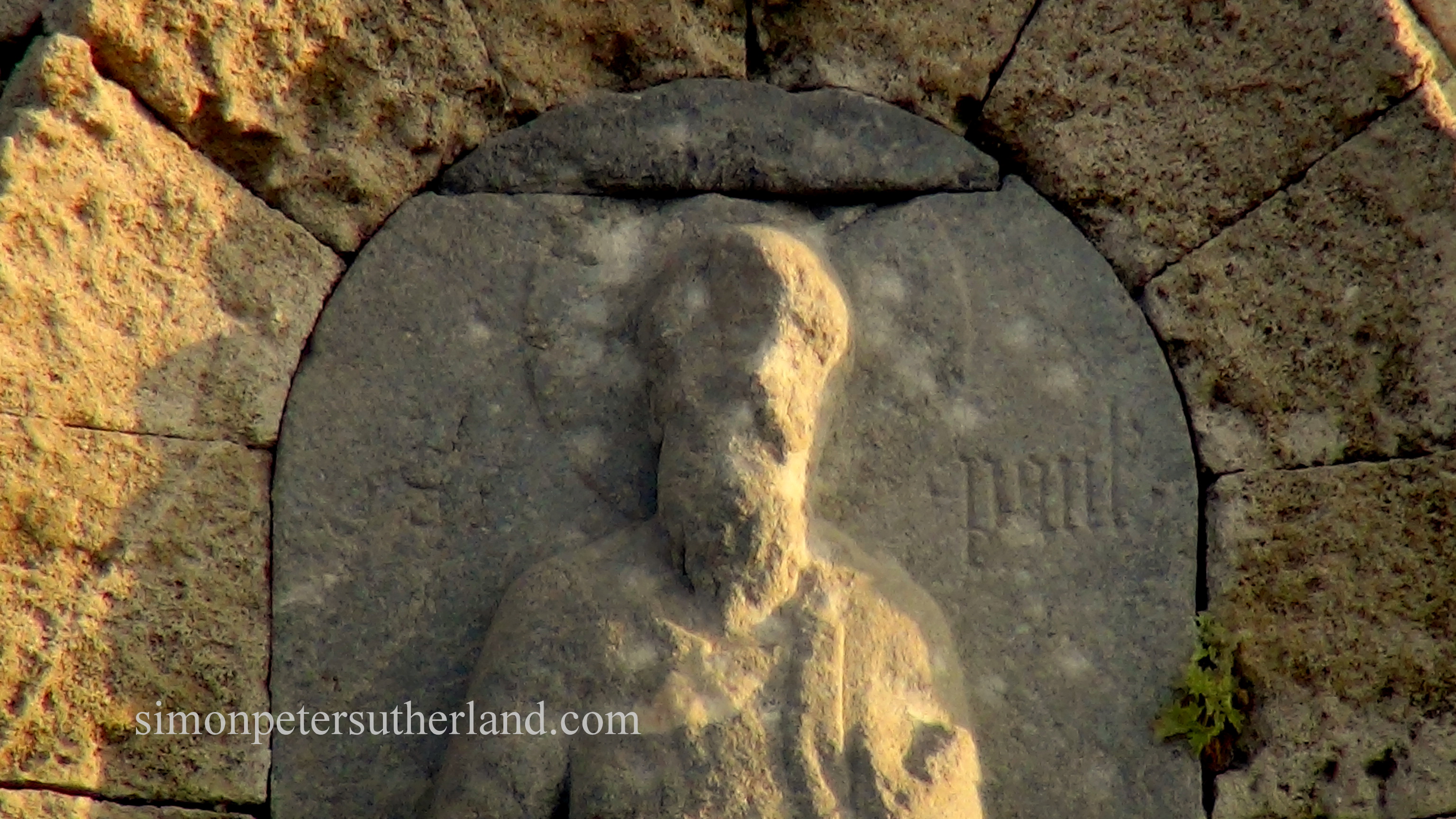
St. Paul, Rhodes Town © 2019 Simon Peter Sutherland
This is Paul the elderly and powerful. His left arm is raised. His right arm is carrying a sword. Representing the sword of the Spirit. His head is leaning to the left.
The Gate of St. Paul was constructed during the 15th century and fortifies an area of the harbour known as the Kolona Harbour. The locals of Rhodes town generally accept that this was the precise location where Paul and Luke landed. This location satisfies me as the site of Acts 21: 1.
Once again, as always, it was wonderful to stand in the places written about in the Bible. The message is clear, keep our eyes fixed upon the Apostles’ doctrine (Acts 2: 42).
Recent discoveries in the Mamertine Prison, Rome
Posted by simon peter sutherland in Biblical archaeology on August 6, 2018
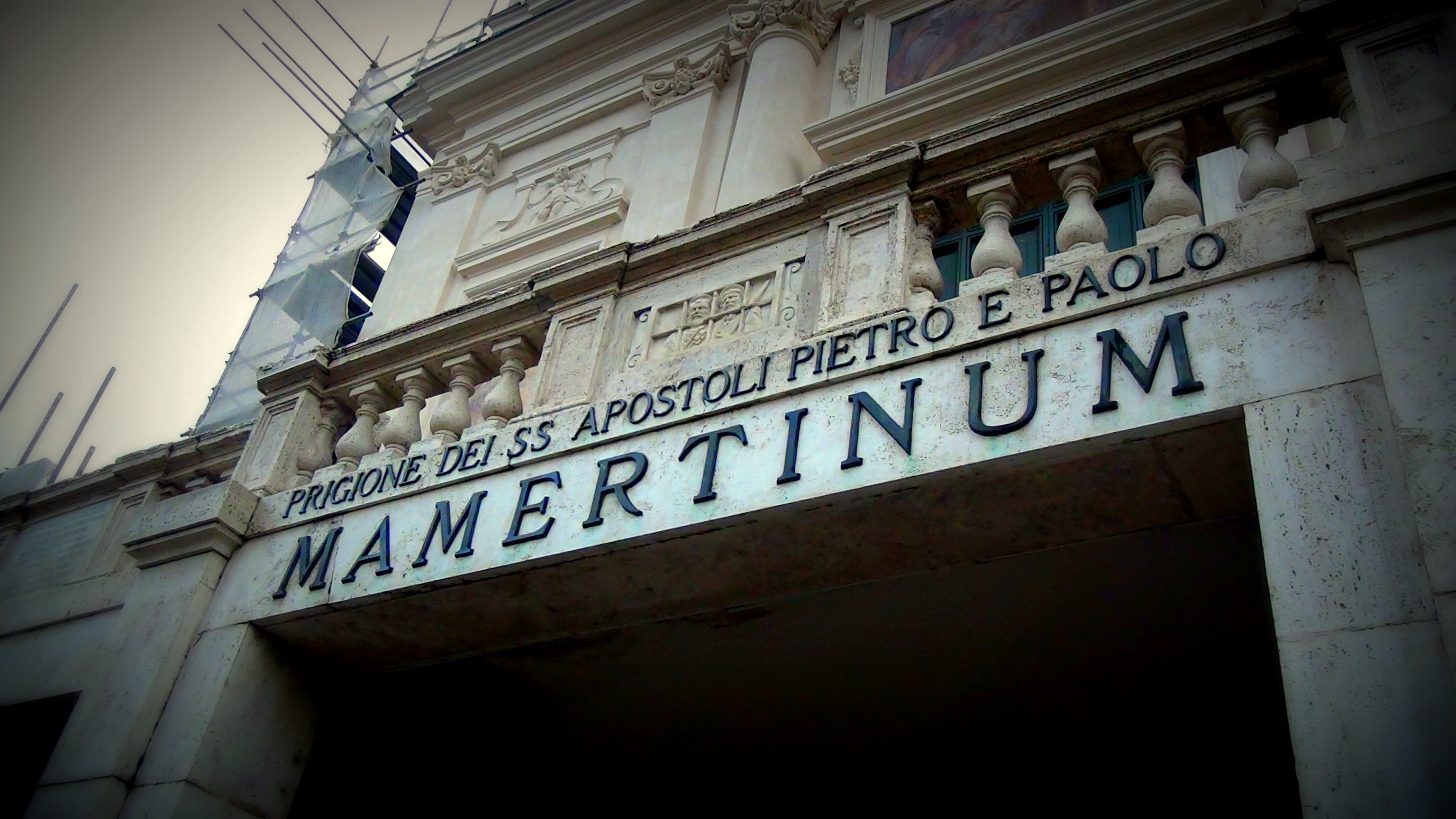
Mamertine Prison, Rome © 2018 Simon Peter Sutherland
“In 2017 I revisited the Mamertine prison, and forum, Rome and explored a number of new discoveries made at the Mamertine the previous year. I believe Paul wrote 2 Timothy from that prison. I also think it possible that 2 Peter and Acts of the Apostles was written from here.
The Mamerine Prison is one of my favorite Biblical places in the world. I have visited the proposed cell of St. Paul at Philippi, I have visited St. Paul’s Grotto, Rabat, Malta, but the Mamertine has won me. It is or was, a cold, damp, dark and dingy place, and such is what I love about it. It is highly primitive. Ancient. Biblical!
In the Basilica of St. Paul outside the walls, Rome, there is an ancient ‘chain’ reputed to have been used to bind St. Paul during his time in Rome. The chain was found in the ancient tomb of St. Paul over which the Basilica was built. When I visited the basilica in 2014, I noticed in 2 Timothy 1: 16 Paul referred to his “chain”. This in the Greek and the English is in the singular. For me, it perfectly matched the description given by Paul. It also fit perfectly with the type of chain that would have been used to bind Paul at the Mamertine.
Having read through an excellent series of books entitled “The Book of Acts in its first century setting” Volume 3, Paul in Roman Custody by Brian Rapske, it is explicitly clear that the Apostolic era was a time of great suffering. Here at the Mamertine, Paul suffered greatly and wrote to Timothy about his departure being at hand (2 Timothy 4: 6). He had stood trial before Casear, probably at the Curia and Eusebius in Ecclesiastical history 2: 22, informs us it was on Paul’s second visit to Rome that he was martyred under Nero.
At the Mamertine when Paul was held there about 60 AD and later, the 2016 excavations revealed that the cell did not have an upper floor like we see today. The upper floor is only about 500 years old and was constructed into the building when it was used as a Church. The original cells were more in the format of a cave rather than a fixed upper and lower level structure. Visitors for many years have believed that Paul was lowered into the lower dungeon via the circled hole in the upper cell floor. But the 2016 excavations revealed that the entrance to the lower cell area came from the upper roof, not the upper floor. When Paul was incarcerated here before his execution, he would have been lowered into the lower dungeon from the upper roof.
This practice often left prisoners physically damaged. Sometimes the broke a leg or an arm. We do not know of the level of damage Paul suffered here, but we know that his time at the jail, within the cell, would have been to face death. Once prisoners were put in here, it was to await execution.
The excavations revealed areas not seen by the public for centuries. These areas were around the main cell, and raised somewhat. If Peter was ever held here, he would have been held in the upper cells until his trial, and when condemned, dropped into the lower cell from the upper roof to await his death.
As I previously mentioned, it is also possible that 2 Peter was written in this cell. Although some modern scholars claim that Peter never wrote 2 Peter, I disagree entirely. While in Rome I attempted to view the letter from the perspective of the ancient city. Upon my return to England I researched the letter internally and found hints of ancient Rome in the text. One of which involved the great fire of Rome, of whom Nero, by tradition, is believed to have blamed the Christians. If Peter was in Rome at the time, he too would have been accused of either arson or inciting it. This could reveal insight into his references to “fire” in 2 Peter 3: 7, 12. He may well have been using the ‘fire’ reference to provoke believers to remember that a coming judgment will bring about the destruction of the world, by “fire”. There can be little doubt from this perspective that the great fire of Rome, would have been the fresh and current hot topic of the city. If Peter was being held in the Mamertine while the great fire was fresh in the minds of the Roman people, it is not difficult to see why he used this reference to remind people of the coming greater judgment at the end of the world. This would place the composition date toward the summer/autumn of 64 AD, because the fire took place in July of that year.”
Excerpt from upcoming book by Simon Peter Sutherland
© 2018 Simon Peter Sutherland
Revisiting Kos
Posted by simon peter sutherland in Biblical archaeology, Documentaries on June 25, 2017

The ancient remains of the Harbour Stoa at Kos town © 2017 Simon Peter Sutherland
On my last visit to the Greek island of Kos I largely explored the island from the perspective of St. Luke, and the impression the Island of Hippocrates might of had on him as a physician. I made a film about it which you can be viewed here
Recently I revisited the island and explored it from the perspective of St. Paul and his mission as recorded in Acts 21: 1. I also took the refreshing perspective of early Church history and how Paul’s visit impacted the island during the early centuries of Christianity.
As always, it was refreshing to me to walk once again in the Apostles footsteps because I regretfully wrestle so deeply with many claims of so many modern ‘Churches’ that a swim in the ancient waters brings me back home. There is nothing quite like washing off the filth of half-truths and misconceptions with a dip in the ocean of Scripture followed with a drink of historic Christianity at the local cafe of consistency.
Kos town and the ancient city of Kefalos are two of those places. My prime locations are the ancient Agora and harbour Stoa of Kos town and Ayios Stefanos near Kefalos. The latter for its ecclesiastical archaeology and the former for its Biblical locations and insights.

Ancient Agora of Kos town © 2017 Simon Peter Sutherland
We can be certain that Paul and Luke visited the ancient Agora of Kos and although the majority of it now lies in ruins, the discoveries of archaeology provide some very insightful things concerning the cults and cultures the Apostle faced when he and Luke visited the area.
On first entry to the town Paul and Luke would have entered into the Agora (marketplace) from the harbour stoa, from here they would have met with the influence of the ancient Greek gods of Aphrodite and Dionysos.
It is true that these ancient sites are just historic ruins, but when a believer is walking through them with presence of the Holy Spirit, the Lord Jesus Christ and a Bible, they are anything but ruins.
Researching Titus 1: 5 on Crete
Posted by simon peter sutherland in Biblical archaeology, Documentaries on June 17, 2016

Kaloi Limenes, Crete © 2016 Simon Peter Sutherland
I have recently returned to England from my visit to the Greek island of Crete.
Travelling thousands of miles across Biblical landscape is always insightful and my primary goal on Crete was to seek out the historic locations written about in Acts 27 and Paul’s letter to Titus. My desire was to gain a more historic understanding of Titus 3: 5;
“for this reason I left you in Crete, that you should set in order the things that are wanting”.
2000 years ago Paul gave commission to Titus to appoint elders in every city on Crete. My aim in visiting Crete was to discover those ancient cities and gain an historic understanding of the work Titus did on Crete. Along the way standing face to face with the ancient law code of Gortyna, the mysteries of the Phaistos disc, ancient Minoan culture, and in some cases frustration at the sheer amount of unexcavated sites, leading to a general lack of information.

Kaloi Limenes ‘Fair Havens’ Crete © 2016 Simon Peter Sutherland
However, travelling over 100 miles across the island, visiting the ancient cities of Heraklion, Gortyna, Lasea and the spectacular mountains to port of ‘Kalio Limenes’ (fair havens) proved insightful to the Biblical narrative yet left many unanswered questions.
Part of the reason for this is that much of the history of ancient Crete has little connection to the New Testament era. Ancient cities such as Knossos have connections but they were long gone by the 1st century AD. But Gortyna and Kalio Limenes are key locations.

The Church of St. Titus, Gortyna © 2016 Simon Peter Sutherland
“Revealing the buried secrets of the Temple mount”
Posted by simon peter sutherland in Biblical archaeology on September 3, 2015
The Arch of Titus and Biblical Prophecy
Posted by simon peter sutherland in Biblical archaeology, Biblical Scholarship on May 30, 2015
In Rome there stands the Arch of Titus. This arch stands on the Via Sacra and was built c 82 AD to commemorate the Roman victory over Jerusalem and the Jewish people.
I had read about the Arch of Titus for many years, and during my visit to Rome it was quite a monumental moment for me to look directly at this treasure of the Biblical era.
The actual arch contains some of the few secular and historical images of the artefacts from the Herodian Temple and the siege of Jerusalem. The arch contains an image of the Menorah which was the very same Menorah that was standing in the Temple in Jerusalem when Jesus was on earth. The Arch also contains excellent representations of the gold Trumpets and the Table of Show bread as written about in the Bible.
It is claimed that the images were once coloured in gold and the background blue.
The inscription on the arch reads like so;
SENATVS
POPVLVSQVE.ROMANVS
DIVO.TITO.DIVI-VESPASIANI.F
VESPASIANO.AVGUSTO
A literal translation into English, would read something like this;
Senate
people Roman Titus divine
Vespasian son Augustus
With some emphasis on translation, it could read like this;
(The) Roman Senate and (the) people to (the) Divine Titus Vespasian son (of) Augustus.
On another note, the situation I so often find myself in is at variance with so many modern claims of secular scholarship. I find it hard to respect certain branches of modern critical scholarship when certain claims are made against the Bible, arguing the narratives are not factual history, but merely religious fiction. These claims are at variance with me continuously, especially when I see facts such as the Arch of Titus standing before my very eyes.
The Arch of Titus strengthens the case to claim that the Synoptic Gospels of Matthew, Mark and Luke were all written well before AD 70, likewise the book of Revelation.
The following verses are affirmed by the Arch of Titus;
Matthew 24: 2
Mark 13: 2
Luke 21: 6
The thing is many modern scholars must claim the Gospels were written after AD 70 and not by eye witnesses or the truth of Biblical prophecy will be clearly seen. The Gospels claim that Jesus, during His incarnation, prophesied the destruction of the Jerusalem Temple around 40 years or more prior to the events themselves. The problem is that many modern critical scholars do not believe in prophecy and therefore approach the texts with that persuasion. Thus, if a person looks at the Biblical narrative through certain spectacles and in denial of the supernatural, that person will only see a natural explanation. Thus, the conclusion will be made that the Gospel narratives were written after the events they prophesied and not by eye witnesses.
As controversial a statement as it may seem these days, there is no actual evidence that the Gospels themselves were written after AD 70. On the contrary, the evidence of the Arch of Titus affirms the New Testament step by step and the Old Testament also.
This claim is not any new argument or contrary to Ecclesiastical history or historical Theology.

